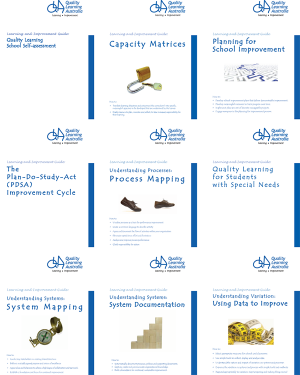Quality Learning: Paying students to Learn?
- David Langford
- Education, General
- 0 Comments

In the past, I believed most educators understood the inherent differences between extrinsic and intrinsic motivation, and valued the latter over the former. However, this does not seem to be the case. Pay-for-grades, gold stars, student-of-the-month programs and attendance rewards are all too prevalent extrinsic motivators used to push students to do a better job. I’ve found an overwhelming amount of evidence that these schemes do not work in the long term, and can even dangerously affect attitudes toward learning. (Alfie Kohn does an excellent job of compiling the evidence against extrinsic motivators in his books No Contest and Punishment by Reward.) There is no lack of evidence that pay-for-grades programs do not work, so why do schools continue to use them? The short answer is: because they appear to work.
Extrinsic rewards and punishments always seem to work if you do not count the costs. Studies have shown that you can get people to do almost anything if you make the motivator—payment or punishment–strong enough. For example, would you sabotage a colleague for ten dollars? Most people would answer “no.” But what if I upped the stakes? Would you do it for one thousand dollars? Ten thousand? One million? If I continued to increase the reward, most people would agree sooner or later–especially if they got to pick the colleague.
The same principle is true with students. If you pay students to get good grades, more students will get good grades for a while. Very quickly students who were only working to get the reward will discover that it is hard work to maintain good grades, and they will decide it isn’t worth the effort unless the reward is increased, because the motivation for getting good grades is not to learn, but to be rewarded. The concept of “learning” to improve one’s self never comes into play with the reward system. Just as teacher unions negotiate for higher pay, so student “unions” will eventually want to negotiate for a higher reward.
Extrinsic Theory: Improved Grades = Reward
Most always these reward schemes are touted as a “new trial program,” as if the idea of extrinsic motivation is a new one. In Washington D.C. in 2008, Chancellor Michelle Rhee, who was making a valiant effort to improve a failing system, was asked why they implemented a “new” program that paid students to get good grades and attendance and she responded, “When critics say that it’s sad to pay students, I say it’s sad that only 8% of D.C. eighth-graders are proficient in math. People in the suburbs use incentives for their kids all the time, like giving them $10.00 for an ‘A.’ Kids in our program can save money for college or get a bank account.” (Parade Magazine, November 16, 2008, p. 26.) It’s unfortunate that we have such huge education gaps in this country and I am certain Chancellor Rhee feels the need to do something about it, but the bottom line is that two wrongs don’t make a right. Just because some parents bribe their children to get better grades does not mean we should apply the same principle to all students. We can easily sabotage motivation through the best efforts of well meaning people.
If the pay-for-grades theory is correct, there should not exist a single example of students succeeding on their own. Yet there are thousands–if not millions– of students who work hard because of a love of learning. Dr. W. Edwards Deming often stated that it only takes a single example to invalidate a theory. Having only 8% of students proficient in math is a dismal statistic to face, but the problem is in the system–not the students. Manipulating students with money will improve some students’ performance for a short period of time, but what happens to students when you can no longer afford to pay them and their attachment to learning is for money? Smothering intrinsic motivation is a cost too great for even one student.
Intrinsic Motivation:
Acquired Knowledge = Joy in Learning
When learning rewards and punishments are eliminated, systemic performance results will always return to what they were before extrinsic manipulation. Remember, 98% of the problem comes from the system, and students have little or no control over systemic factors. Manipulating student extrinsic motivators does not address the basic cause(s) of the problem. Try asking students with a Force Field Analysis to identify driving and preventing forces of learning, then prioritize the preventing forces with an NGT. You might be shocked to realize that existing factors preventing learning have nothing to do with lack of pay-for-grades. One of the most misguided efforts of quality improvement is trying to improve something that should be eliminated, such as automating grading systems, increasing training for behavior modification or improving the pay-for-grades program. I can guarantee you, in low performing schools there are fundamental problems with:
- Teacher training and support
- Leadership and management
- Process Management
- Communication
- The way schools are built and maintained
- The way technology is being used or not used
- Funding for classroom books and materials
- Vision and purpose
One of the reasons many extrinsic motivation programs have stayed around for so long and are continually resurrected and improved is because they are convenient for the people managing the system. They keep the focus off leadership and mistakenly place it on the people working in the system. In every education system I have consulted–from the U.S. Naval Academy to primary and secondary schools in the U.S. and Australia to pre-schools in Argentina–the story is the same: we blame students for poor performance without first considering the systemic causes. In psychology this is known as the fundamental attribution error.
If you want a significantly different result, you must first change the system. In 2008, I applauded Michelle Rhee in Washington D.C. for trying to improve a broken system, and I offered my help. She had made many excellent systemic changes in D.C. such as closing 23 under-populated schools and paying for librarians, art, music and P.E. teachers at remaining schools. These systemic efforts will help to improve student motivation for learning. (Here is a 2017 update on Michelle Rhee)
Systemic problems are normally out of the circle of influence of students and none of these systemic problems will go away simply by bribing students to work harder within a failing system. Leaders must learn to, as Dr. Deming once said, “work smarter, not harder.” If you want a different result, try changing the system and watch what happens to behavior, instead of continually doing what we have always done by leaving the system alone and trying to change the behavior of the people in it.
Best regards,
David P. Langford
President, Langford International, Inc.
-

Guidebook Bundle (Read-Only PDF Download)
$90.00 Add to cart -

Introduction to Quality Learning and PDSA
$497.00 Select options This product has multiple variants. The options may be chosen on the product page -

Tool Time for Education
$75.00 Add to cart









